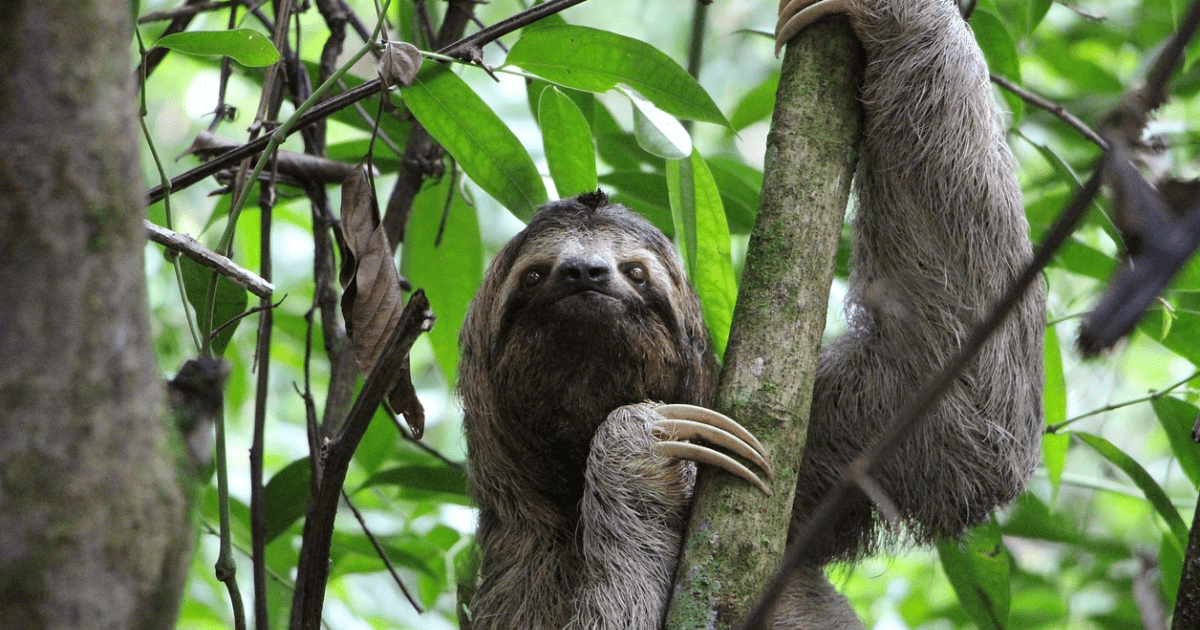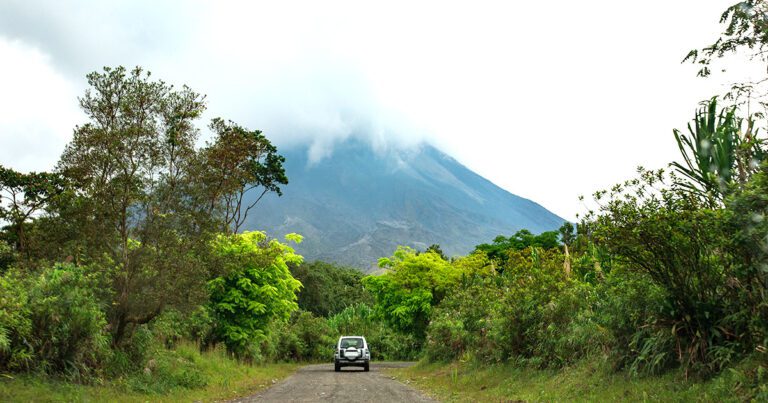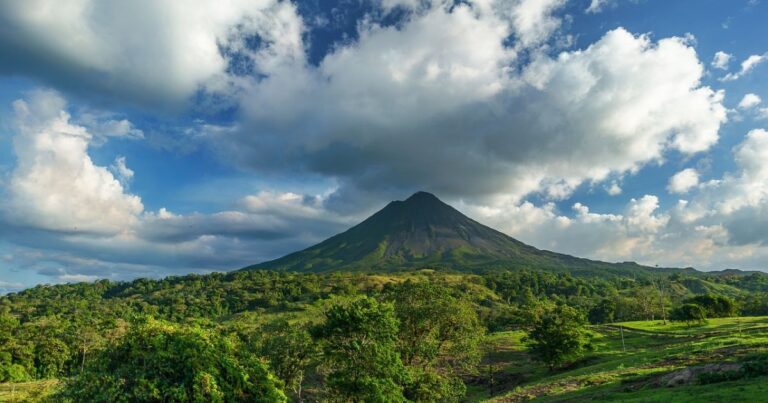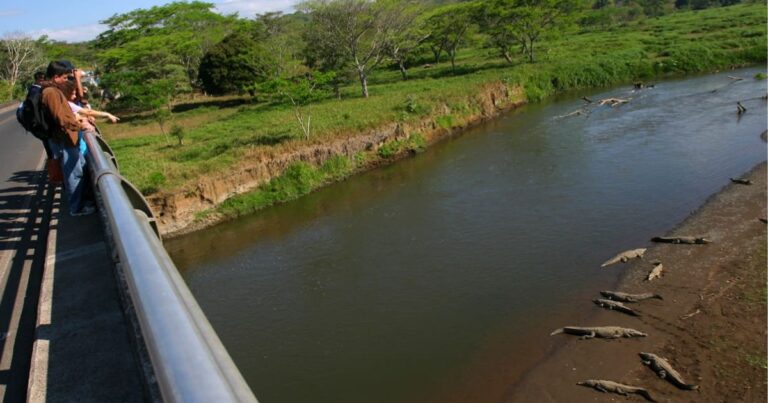Have you ever wondered what secrets lie within the lush jungles and shimmering coastlines of Costa Rica? With biodiversity often considered one of the world’s finest, the rich tapestry of fauna in this Central American paradise is sure to leave any nature lover in awe. The country is home to an incredible variety of Costa Rica animals.
Costa Rica is more than just a travel destination—it’s a sanctuary for countless species, from the vibrant macaws soaring above to the elusive sloths lounging lazily in the trees. With a commitment to conservation, the country has established numerous national parks and reserves that are teeming with life. Yet, discovering the animals of Costa Rica and their favorite spots can be a bit of a puzzle, especially for first-time visitors.
To truly appreciate the wonders of Costa Rica’s wildlife, you need to know where to look and which animals to find. Whether you’re an adventurer seeking excitement or a peaceful observer wanting to connect with nature, understanding the habitats and habits of the local animals is essential.
In this guide, we’ll take you on an amazing journey to discover the most fascinating Costa Rican animals and their favorite spots, ensuring that your exploration of this vibrant country is nothing short of unforgettable.
The Natural Wonders of Costa Rica
Costa Rica is renowned for its stunning natural wonders, which create the perfect backdrop for its vibrant wildlife. From majestic mountains to serene beaches, the country is a treasure trove of diverse ecosystems. One of the most impressive sites is Arenal Volcano, an active cone-shaped volcano surrounded by lush rainforests and hot springs. Visitors flock to this area not only for the breathtaking views but also for the chance to spot unique wildlife like howler monkeys and colorful poison dart frogs. The combination of these natural features makes Arenal a top destination for animal lovers and adventure seekers alike.
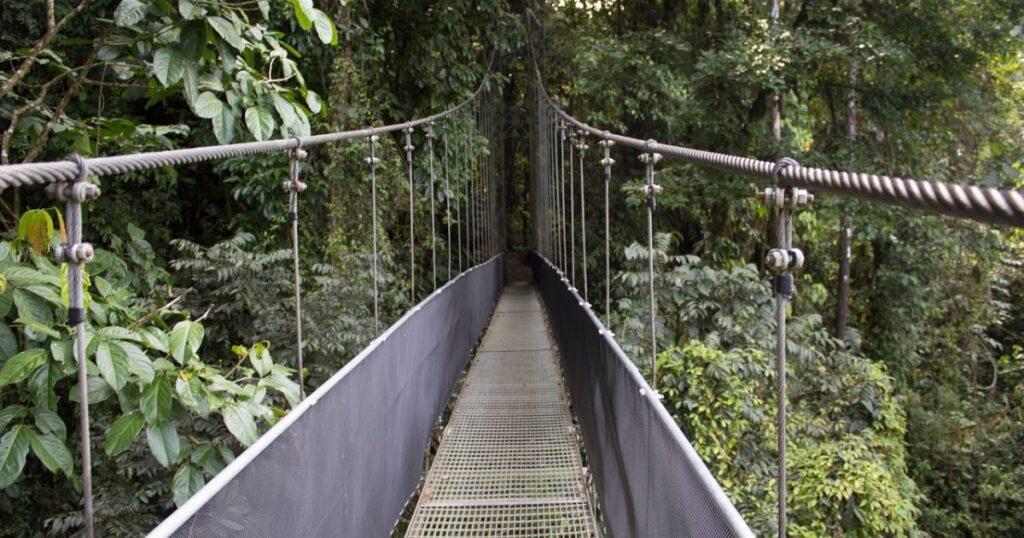
Another remarkable destination is the Monteverde Cloud Forest Reserve. This mystical region is characterized by its thick, foggy canopy and rich biodiversity. Home to thousands of plant and animal species, including the elusive resplendent quetzal, Monteverde offers an unforgettable experience for nature enthusiasts. The cool, misty atmosphere nurtures countless orchids and ferns, while well-maintained hiking trails allow visitors to immerse themselves in the forest’s beauty. As you explore this enchanting landscape, keep an eye out for the many species that thrive in the unique cloud forest environment.
Furthermore, the stunning beaches of the Pacific and Caribbean coasts provide yet another habitat for Costa Rica’s incredible wildlife. Areas like Manuel Antonio National Park and Tortuguero National Park are not only popular for their picturesque shores but also for the variety of animals that inhabit them. While relaxing on the beach, you may witness sea turtles nesting or spot monkeys swinging through the trees. With such an array of natural wonders, Costa Rica is truly a paradise for discovering animals and their favorite spots, making it a must-visit for anyone seeking an unforgettable connection with nature.
20 Iconic Costa Rica Animals and Their Favorite Spots
Costa Rica is a treasure trove of wildlife, home to a stunning array of iconic animals that showcase the country’s incredible biodiversity. Each Costa Rica animal has its favorite spot, where they thrive and interact with their unique surroundings. As you explore Costa Rica, you’ll soon discover that every corner holds the promise of an unforgettable Costa Rica wildlife encounter. So, let’s delve into the world of these iconic Costa Rica animals and discover the best locations to see them in their natural habitats.
1. Sloth
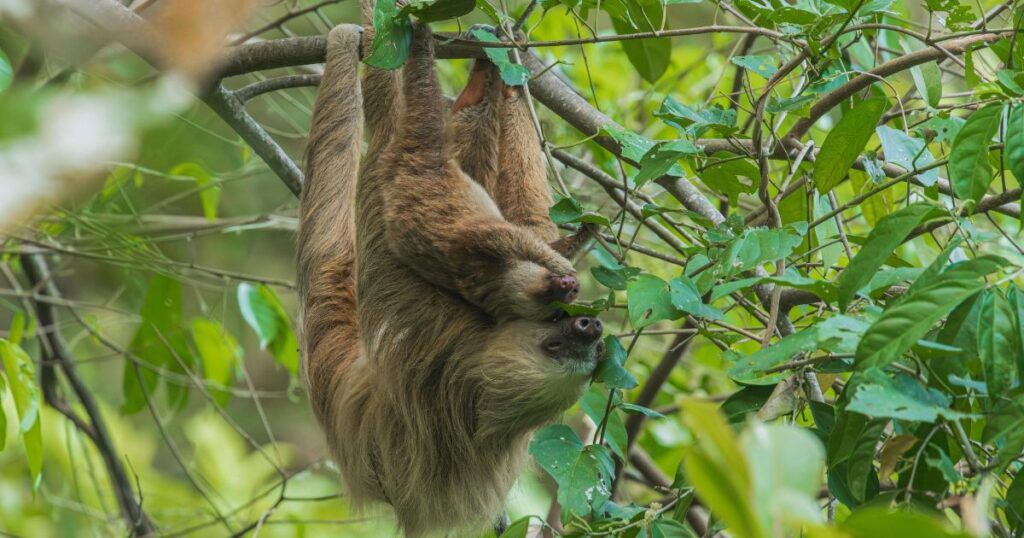
Sloth is one of the most fascinating animals you can encounter in Costa Rica. Known for its slow movements and adorable face, this creature can often be spotted hanging out in trees, especially in places like Manuel Antonio National Park and Cahuita National Park. With its tranquil lifestyle and delightful presence, the sloth is a true symbol of Costa Rica’s rich biodiversity, inviting all who visit to slow down and appreciate the wonders of nature. Both two-toed and three-toed sloths can be found in these lush habitats.
2. Howler Monkey
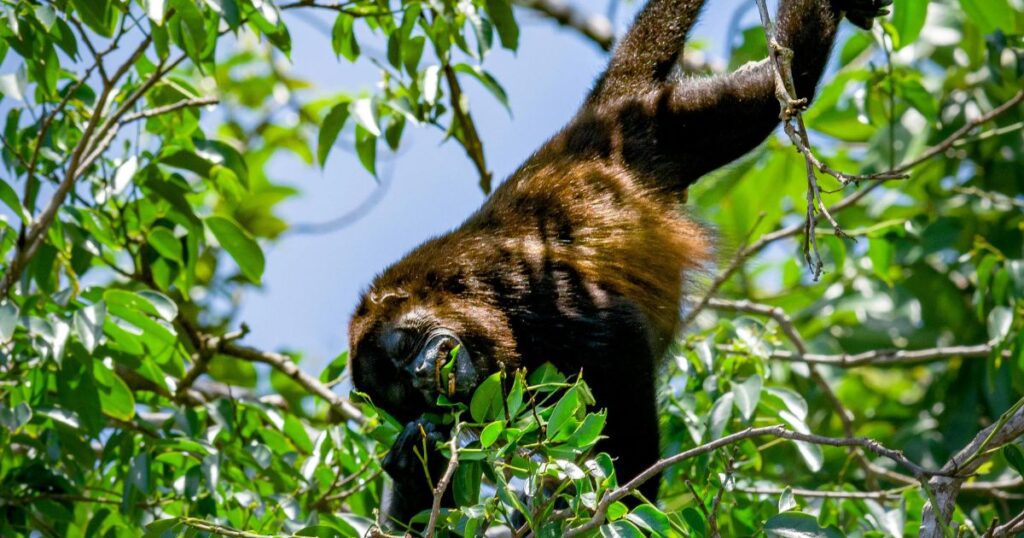
The howler monkey is one of the most recognizable animals in Costa Rica because of its loud, distinctive howls that can be heard for miles. These fascinating primates are usually found in groups, often swinging through the trees in the lush canopies of tropical forests. At the Monteverde Cloud Forest Reserve, visitors are treated to the incredible sight of these monkeys as they forage for leaves, fruits, and flowers. You’ll surely enjoy seeing their playful nature while hearing their unique vocalizations.
3. Red-eyed Tree Frog
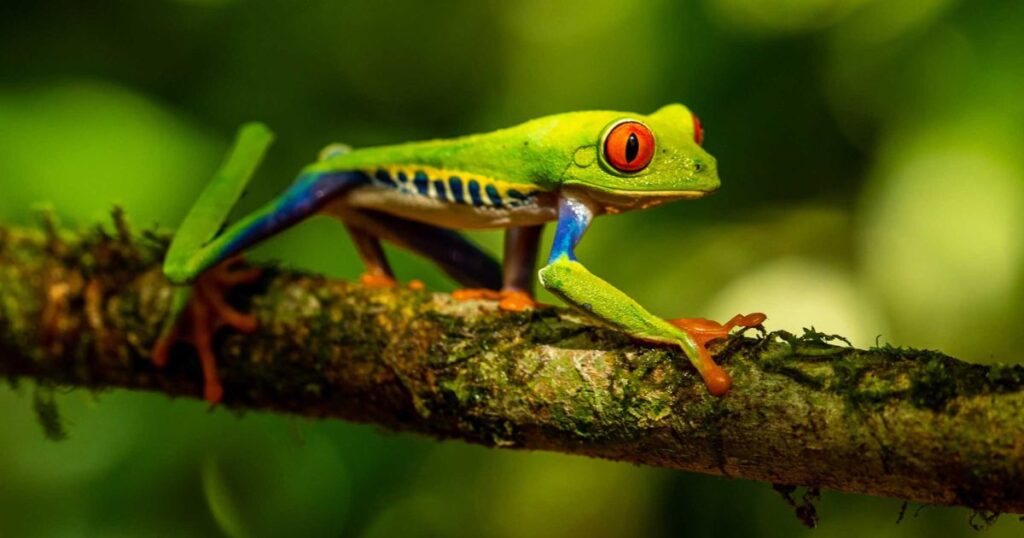
With its vibrant green body, bright red eyes, and blue and yellow flanks, the red-eyed tree frog is a small amphibian that stands out in the lush rainforest. You’ll often find these frogs perched on the underside of leaves, especially in the humid areas of the country. Not only are they a favorite sight for visitors, but they also play an important role in the ecosystem as both predators and prey. Their favorite spot? The tropical rainforests of Costa Rica, particularly in places like La Selva Biological Station and the Monteverde Cloud Forest. These frogs are especially visible during the rainy season when they breed in temporary water pools.
4. Scarlet Macaw
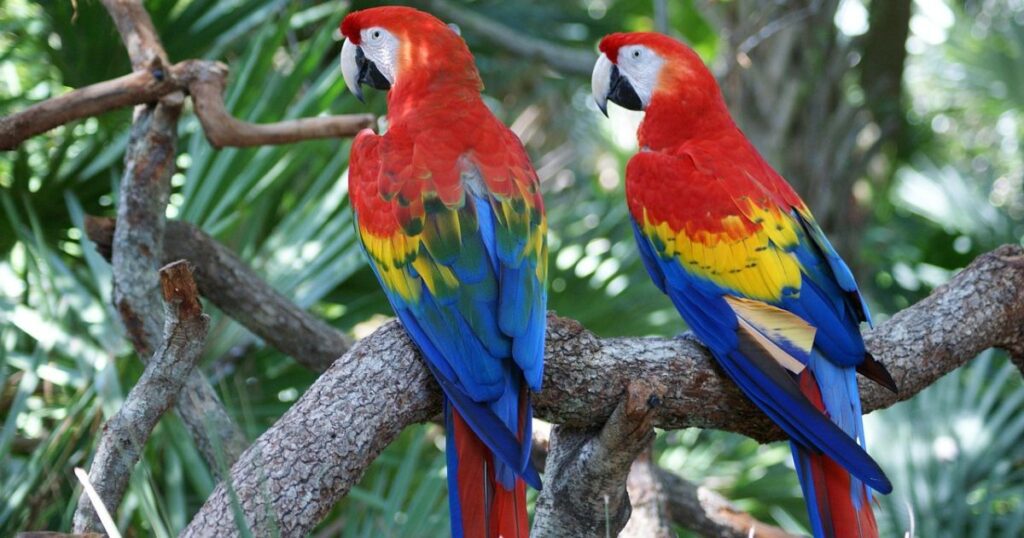
The Scarlet Macaw stands out with its vibrant colors and striking presence. These large parrots boast brilliant red, blue, and yellow feathers, making them a favorite among wildlife photographers and birdwatchers. To catch a glimpse of these stunning birds, head to the lush forests of Corcovado National Park. In this protected area, Scarlet Macaws can often be seen soaring through the treetops or perched majestically on branches. Their loud calls and playful behavior add to the allure of observing them in their natural habitat.
5. Jaguar
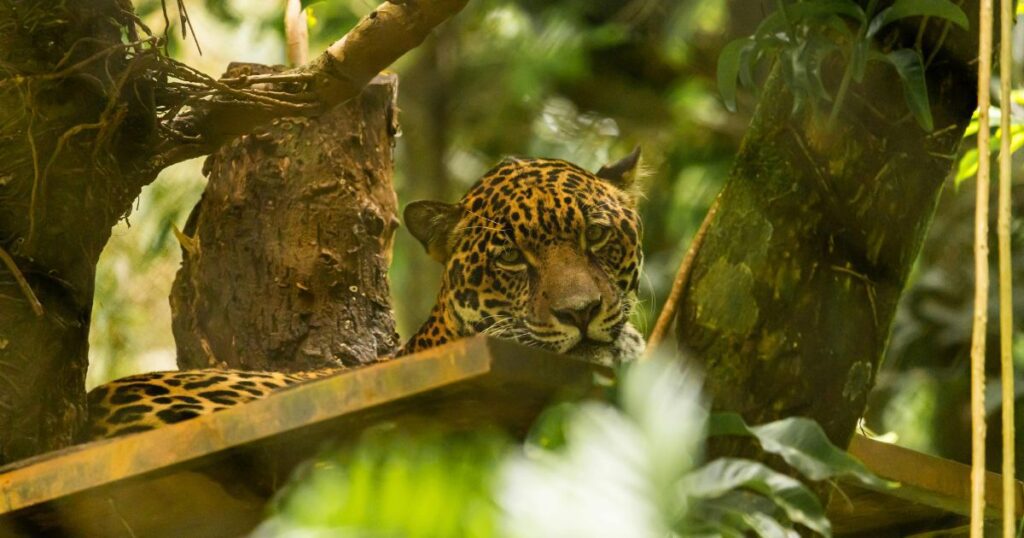
Costa Rica is a vibrant paradise that is home to a diverse array of iconic animals. Among them, the majestic jaguar stands out as one of the most elusive and captivating creatures in the country. Found primarily in the dense rainforests of Corcovado National Park, these powerful big cats are known for their distinctive coat and incredible strength. They typically roam the secluded areas of the park, where they thrive in the lush environment away from human disturbance.
6. Toucan
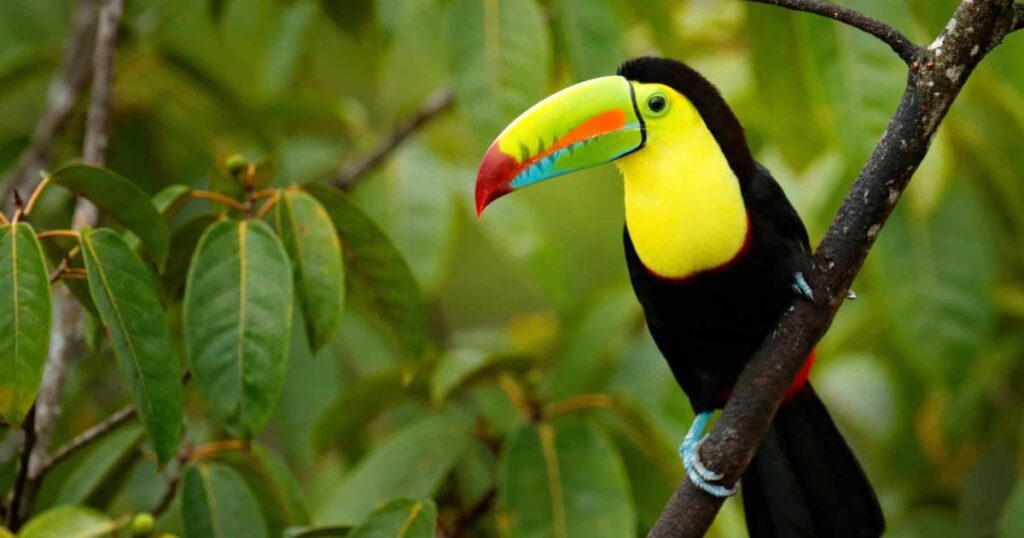
The toucan is one of Costa Rica’s most iconic birds, easily recognized by its long, colorful bill and striking plumage. Often found in tropical lowland forests, these vibrant birds thrive in areas with abundant fruit trees. Cahuita National Park, with its lush vegetation and rich biodiversity, serves as a perfect habitat for them. Here, visitors can often hear their distinct calls echoing through the trees as they search for ripe fruits and berries.
7. Green Sea Turtle
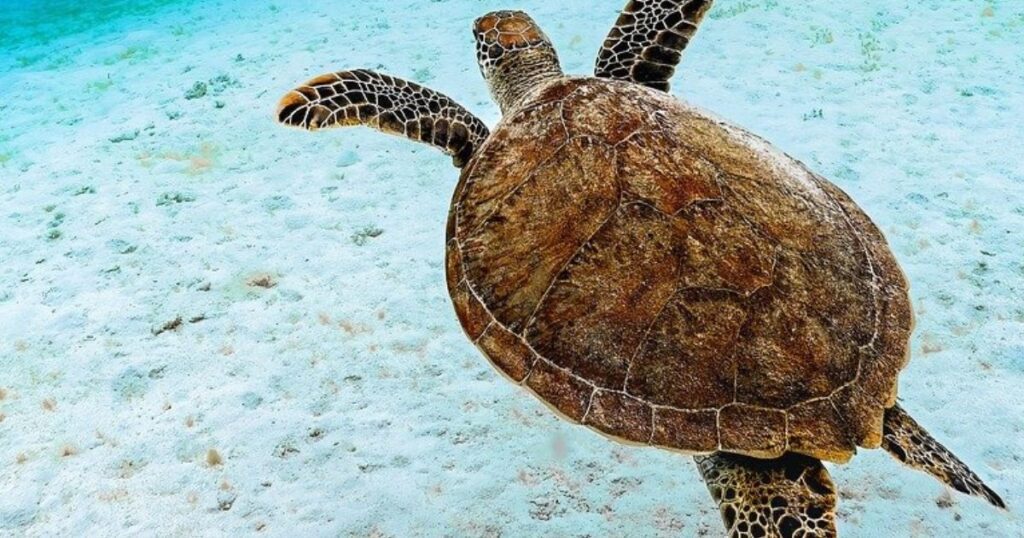
The Green Sea Turtle is a magnificent creature known for its beautiful olive-colored shell. Often, it can be spotted along Costa Rica’s pristine coasts. One of the best places to observe these turtles is in Tortuguero National Park. Here, during nesting season, you might witness females climbing onto the sandy beaches to lay their eggs while hatchlings make their daring journey to the ocean.
8. Poison Dart Frog
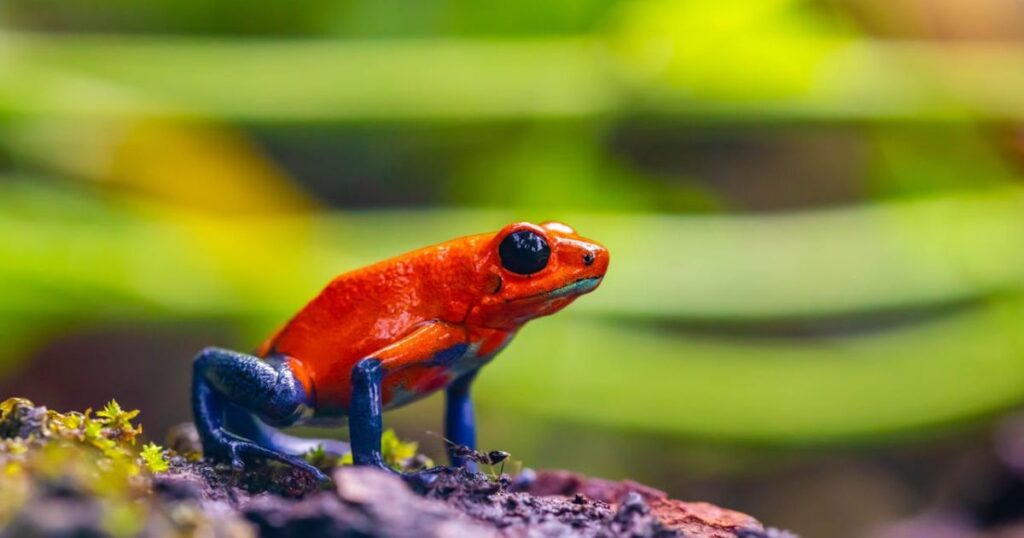
The poison dart frog is one of Costa Rica’s most stunning and well-known animals. These small, brightly colored frogs can be found in the country’s humid rainforests. Their vibrant hues, ranging from bright yellow to electric blue, serve as a warning to potential predators about their toxicity. You can often spot them near streams and ponds, where they thrive in the dense foliage.
One of the best places to see these fascinating creatures is the La Selva Biological Station, a renowned location for biodiversity. Here, both novice and experienced wildlife watchers can admire these small but mighty amphibians as they hop among the leaves.
9. White-faced Capuchin Monkey
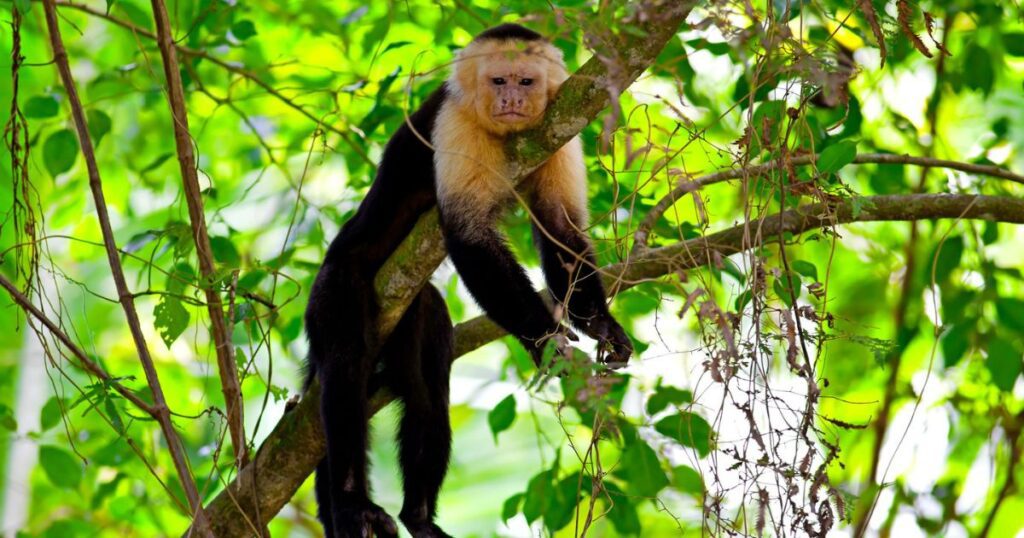
With its striking black and white fur, the White-faced Capuchin Monkey often steals the show in tropical parks and coastal areas. These playful monkeys are highly sociable and known for their intelligence, which makes them a delight to observe. You can frequently spot them in Manuel Antonio National Park, where they are often seen swinging through the trees and interacting with their troop. Their cheeky behavior and curious nature allow visitors to get a close-up look as they search for food, adding to the excitement of a wildlife encounter.
10. Basilisk Lizard
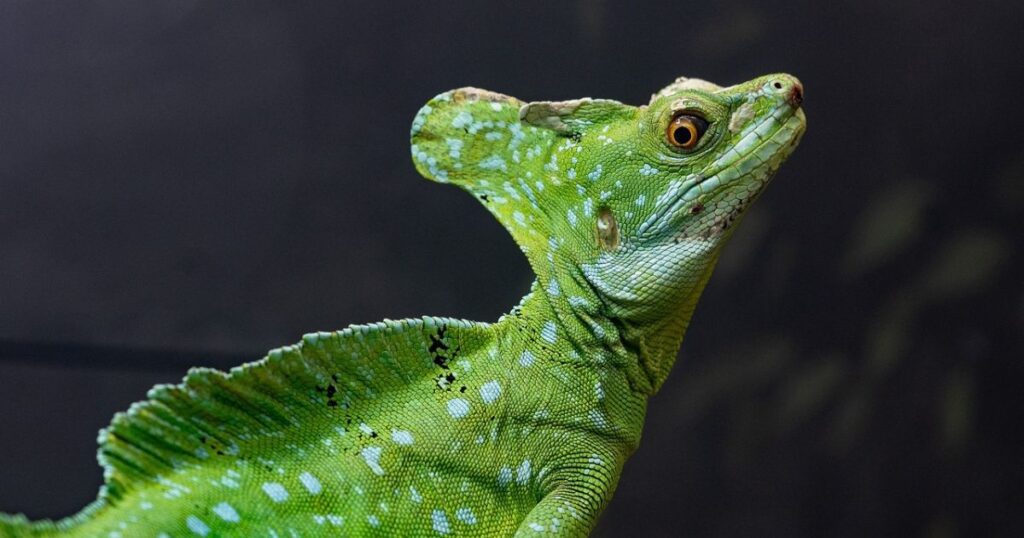
Known as the “Jesus Christ Lizard,” the basilisk lizard has a remarkable ability to run across the surface of water. This unique reptile can be found in lush habitats near rivers and streams, predominantly in the lowland rainforests. As it scurries along, you might catch a glimpse of its striking green coloration and distinctive crest along its back. These lizards thrive in areas like Arenal National Park and Tortuguero, where they can easily evade predators while basking in the sun or seeking shelter in dense vegetation.
11. Ocelot
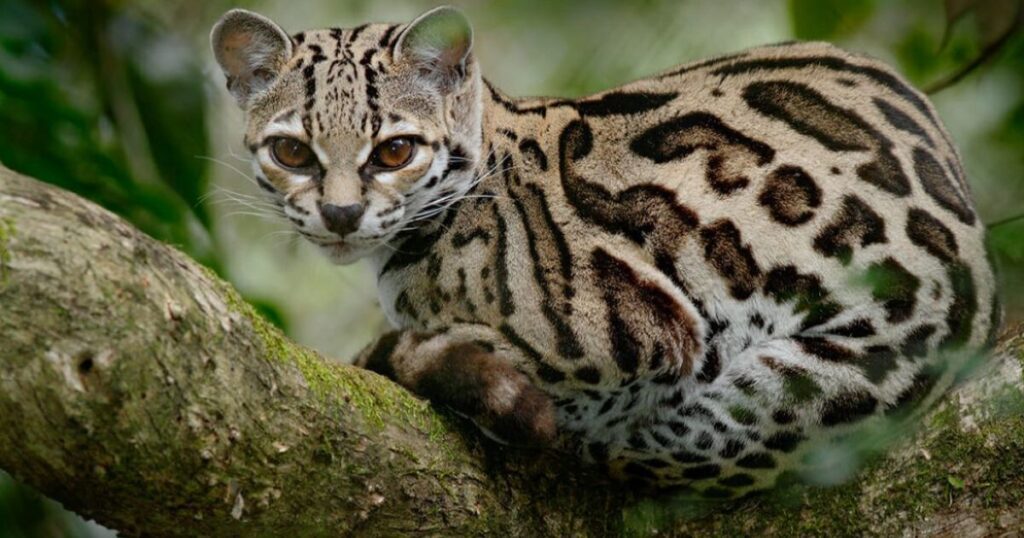
Ocelot is a stunning wild cat known for its striking coat marked with beautiful rosettes and stripes. This elusive feline primarily thrives in dense tropical forests, making it a challenge to spot in the wild. However, dedicated wildlife enthusiasts often have success searching for Ocelots in places like Corcovado National Park, where they roam freely alongside other incredible species. With their nocturnal habits, these cats are most active at night, adding to the thrill of encountering one in its natural environment.
12. Hummingbird
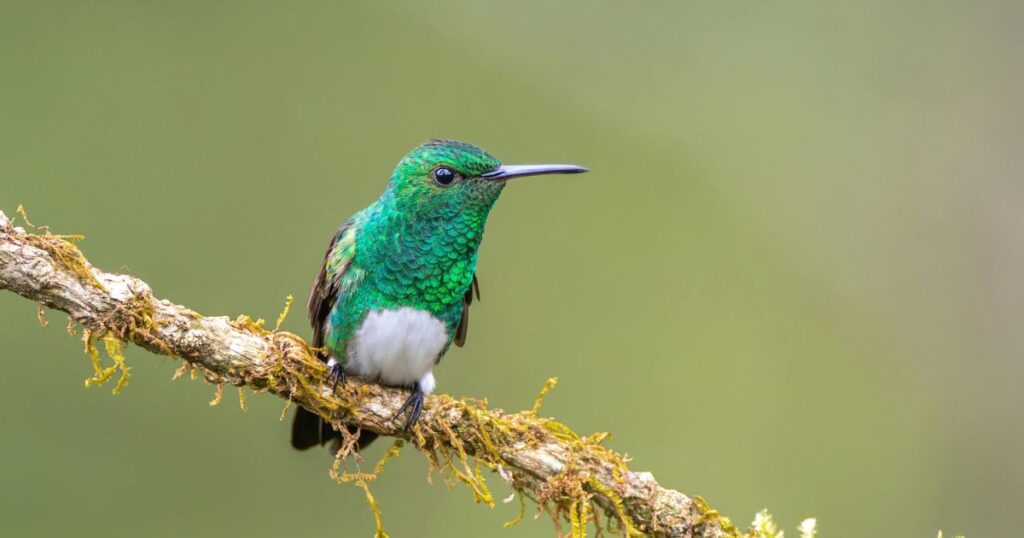
Hummingbird stands out for its incredible agility and vibrant colors. These tiny birds, known for their rapid wing beats, can be found darting between flowers in search of nectar. In particular, the Santa Elena Cloud Forest Reserve is a prime location to observe various hummingbird species, including the magnificent hummingbird and the violet-crowned hummingbird. With their stunning beauty and playful behavior, hummingbirds add life to the lush landscapes.
13. Tapir
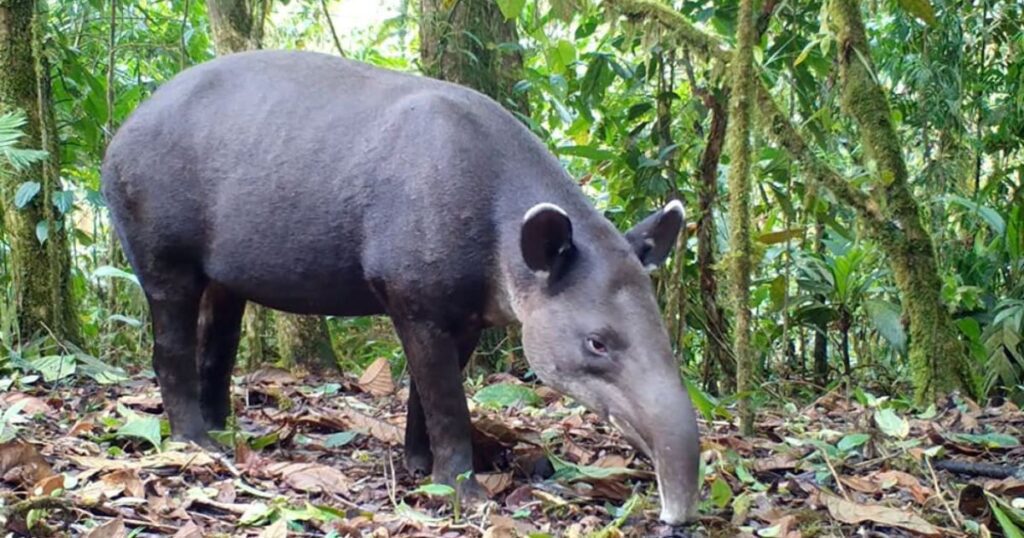
The tapir is a fascinating herbivorous mammal that roams the lush jungles of Costa Rica. With its large, sturdy body and distinctive elongated snout, the tapir resembles a mix between a pig and a horse. While these creatures are often elusive, Corcovado National Park is a prime location for spotting them, especially in the early morning or late afternoon. This national park, known for its incredible biodiversity, provides a perfect habitat for tapirs as they often wander near rivers and wetlands in search of food.
14. Jaguarundi
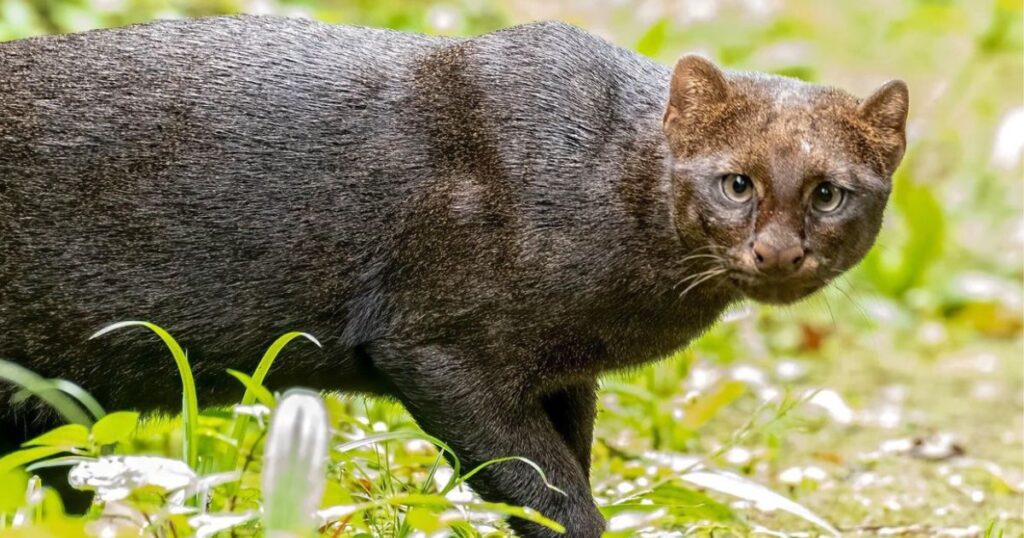
Jaguarundi is a sleek, medium-sized wildcat often mistaken for a house cat because of its size and features. Unlike its larger cousins, the jaguar and ocelot, the jaguarundi has a long, slender body and a short tail, making it a unique sight in the wild. Typically, this elusive feline prefers the dense underbrush and coastal areas of its habitat, seeking out regions rich in vegetation. To catch a glimpse of a jaguarundi, head to places like Palo Verde National Park or the lowland rainforests along the Osa Peninsula, where these remarkable animals roam freely and are sometimes spotted during the early morning or late afternoon.
15. Agouti
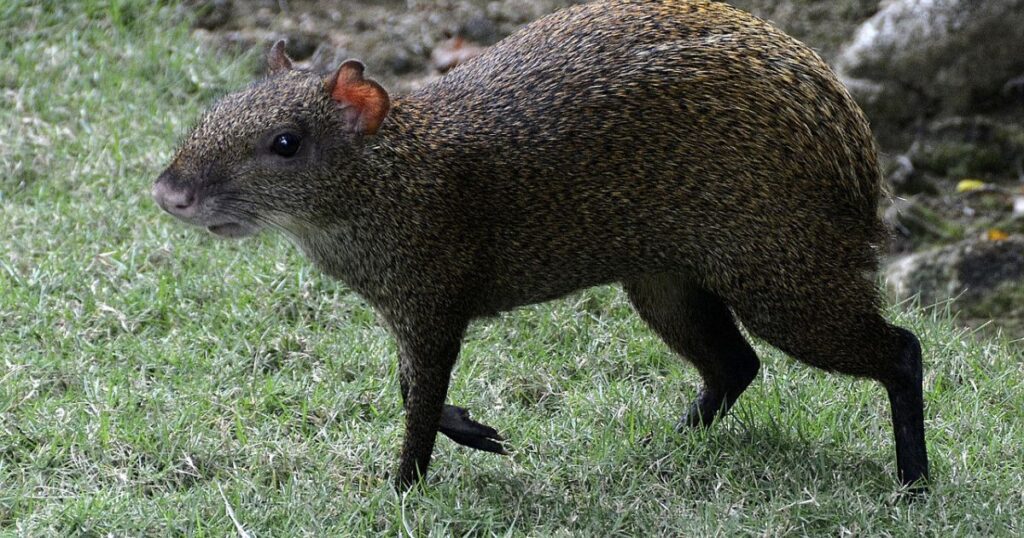
Agouti is a small, rodent-like mammal often seen foraging for food in the forest understory, particularly in areas with dense vegetation. Agoutis are known for their unique physical features, including a small, compact body and short legs. Interestingly, they play a crucial role in their ecosystem by dispersing seeds, which helps promote plant growth. If you’re eager to spot an agouti, head to Cahuita National Park, where these delightful animals can frequently be observed roaming the forest floor in search of fruits and nuts.
16. Frog (various species)
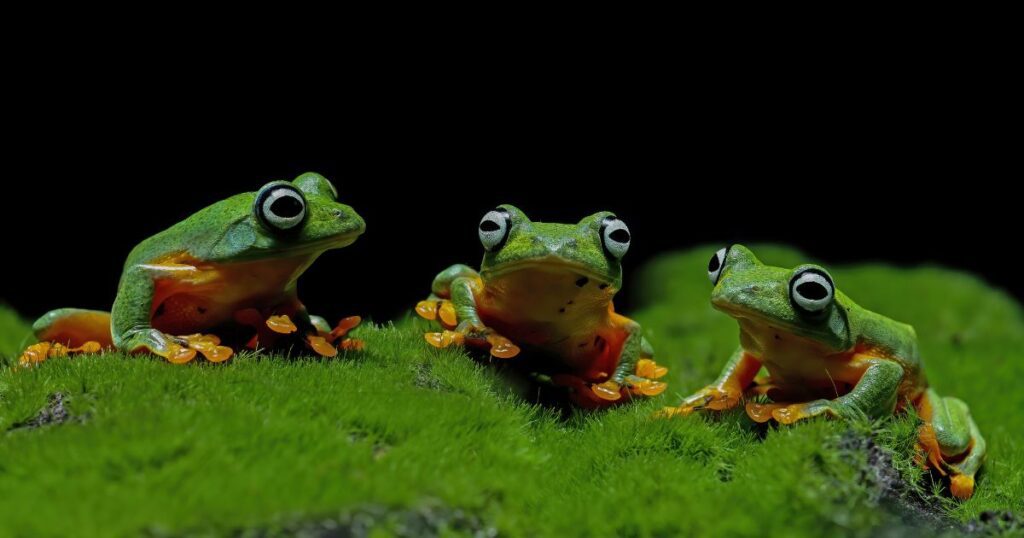
Costa Rica is home to various species of frogs, showcasing a colorful array of species that are essential to the ecosystem. Among the most famous is the vibrant red-eyed tree frog, known for its striking green body and bright red eyes. These frogs thrive in the moist rainforests, often spotted clinging to leaves or hopping near water sources. Their unique colors serve as a warning to potential predators, indicating their toxicity. To observe these incredible creatures, head to La Selva Biological Station or the lush Monteverde Cloud Forest, where the rich biodiversity provides a perfect habitat for frogs.
17. Leafcutter Ants
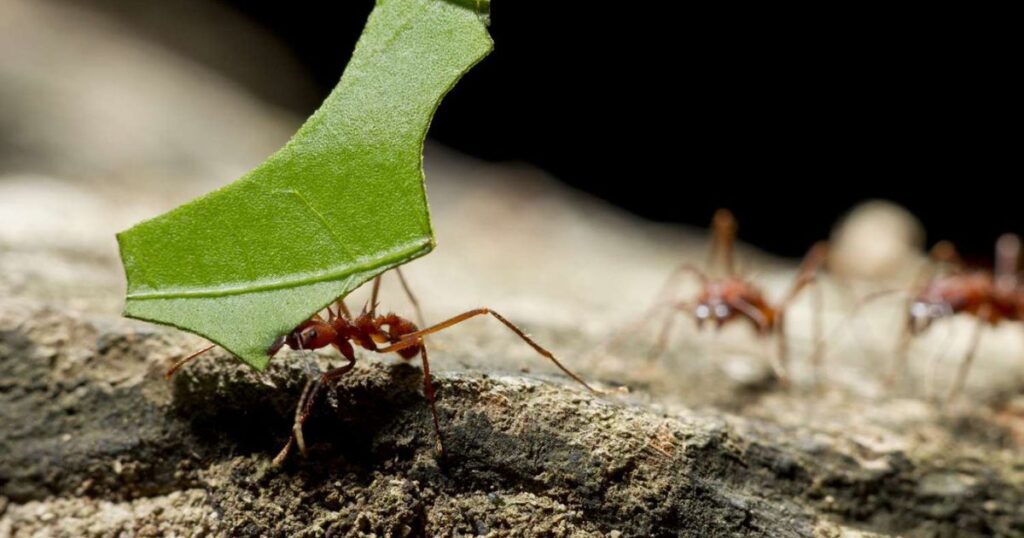
Leafcutter ants are incredible insects known for their unique behavior of cutting and collecting leaves to cultivate their own fungal gardens. As you watch them march in organized trails, it’s hard not to admire their teamwork and determination. Leafcutter ants can often be found in various habitats across the country, particularly in rainforests and along forest edges. In fact, locations like Monteverde Cloud Forest Reserve and Manuel Antonio National Park are prime spots to witness these industrious creatures in action.
18. American Crocodile
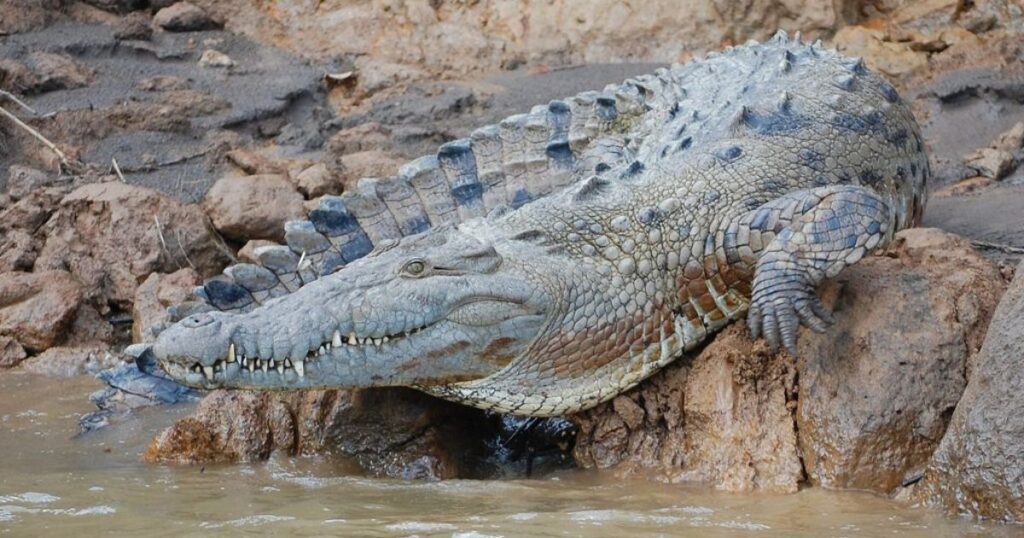
The American crocodile is an impressive reptile that can grow up to 15 feet long and is often found in both freshwater and brackish environments. For those eager to spot one, the Tarcoles River is the place to be. Here, these magnificent creatures can often be seen basking on the riverbanks or swimming gracefully through the water. It’s important to observe them from a safe distance, as they are powerful predators.
19. Great Green Macaw
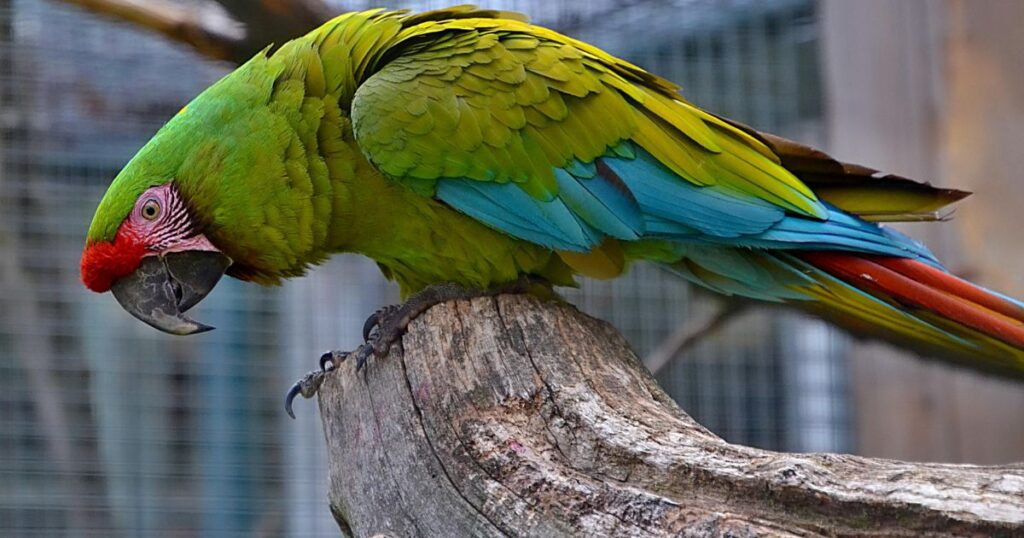
The Great Green Macaw is one of the most striking and majestic birds found in Costa Rica. With its vibrant green plumage and vivid blue and red accents, this parrot easily captures the attention of anyone lucky enough to spot it. These social birds typically inhabit lowland rainforests and can be found in pairs or small groups, often high in the tree canopy. Transitioning from their beauty, it’s important to note that their population is endangered, largely due to habitat loss and illegal trapping. Their favorite spots include the lush forests of the Osa Peninsula and areas around the Corcovado National Park, where they can thrive among the rich biodiversity.
20. Coati
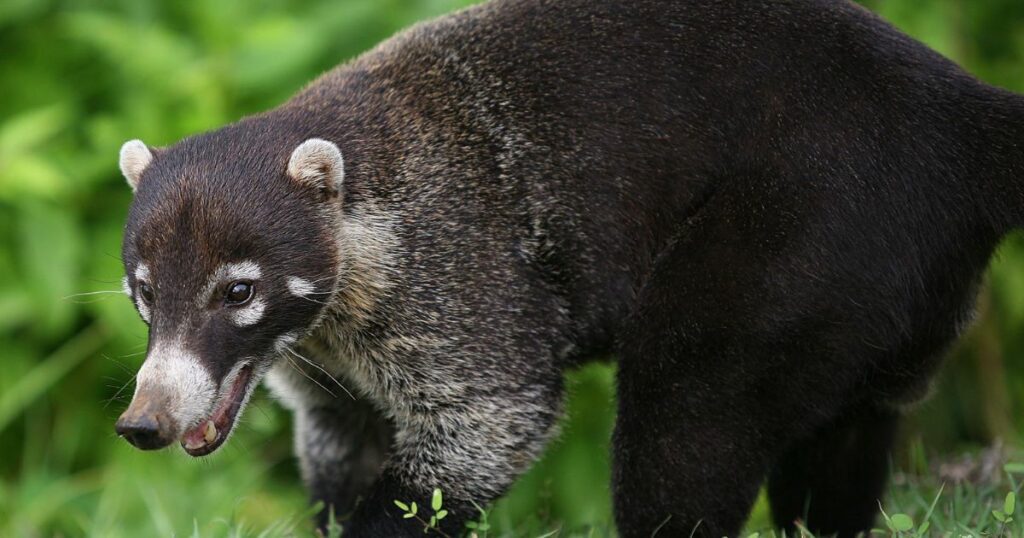
Among Costa Rica’s many iconic animals, the Coati stands out for its playful nature and striking appearance. This curious creature, resembling a small raccoon, can often be spotted foraging in groups along forest floors. With its long snout and ringed tail, the Coati is not only charming but also an essential part of the ecosystem. You can frequently find them in popular locations like Manuel Antonio National Park, where they scavenge for fruits and insects.
8 Lesser-Known Costa Rica Animals and Hidden Gems
Costa Rica is famous for its stunning wildlife, but many incredible animals remain hidden in the shadows, waiting to be discovered. While sloths and toucans often steal the spotlight, there are lesser-known creatures that are just as fascinating and deserve attention. In this section, we’ll introduce you to several unique Costa Rica animals that may not be on the typical tourist’s radar. You’ll also learn about the hidden gems where these animals thrive, inviting you to explore off the beaten path.
1. Red-Footed Tortoise
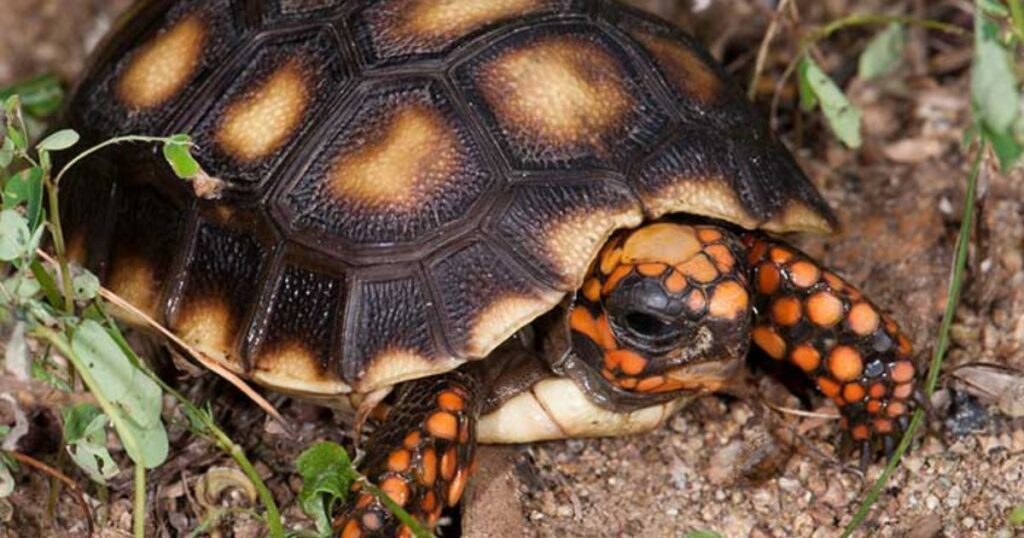
The red-footed tortoise is a fascinating species native to Costa Rica. With its striking, colorful shell featuring vibrant red and yellow patterns, it stands out among other tortoises. Unlike many of its relatives, the red-footed tortoise is known for its gentle demeanor and herbivorous diet, primarily munching on fruits, leaves, and flowers. You can often spot these tortoises basking in the sun or foraging in the underbrush. Their favorite spots include the lush surroundings of Tortuguero National Park, where they thrive in the humid environment and abundant vegetation.
2. Pygmy Marmoset
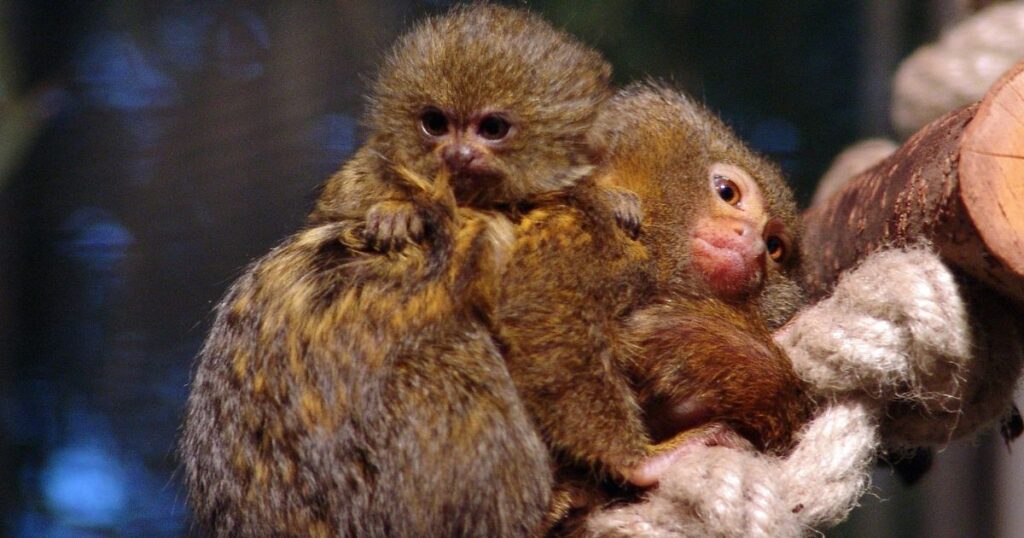
The Pygmy Marmoset is the smallest monkey in the world, measuring just about 4 to 6 inches long. Unlike other monkeys, it has a distinctive mix of gray fur with golden and brown markings that allow it to blend into its rainforest surroundings. These playful creatures are social and often live in family groups, making them fun to observe as they leap between branches. You can find them in the lush canopies of the Osa Peninsula, where their tiny size allows them to navigate the dense foliage with ease.
3. Kinkajou
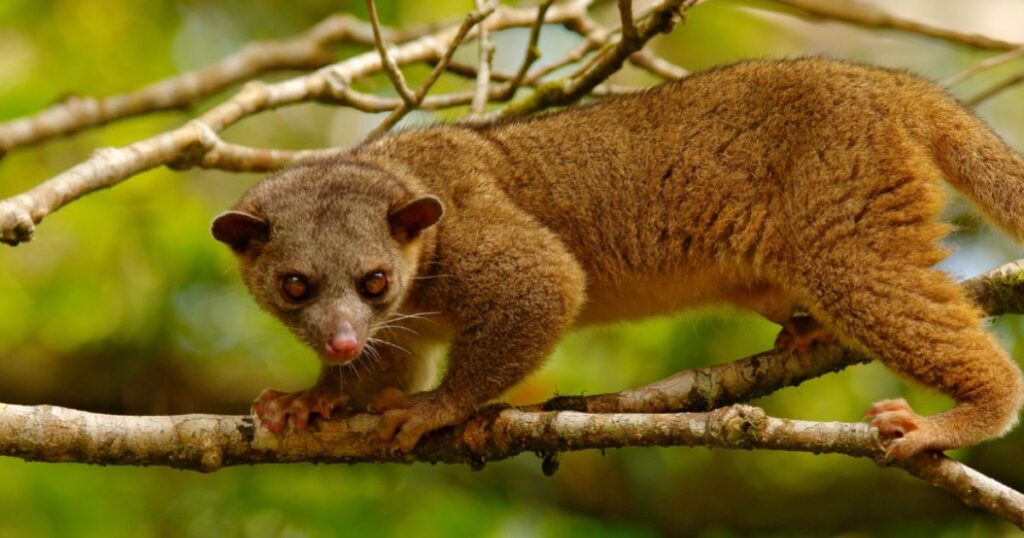
The kinkajou is a lesser-known, nocturnal mammal that captures the hearts of those fortunate enough to encounter it. Often described as resembling a small raccoon, it has a golden-brown coat with a long, prehensile tail that helps it navigate the treetops. Kinkajous are not only adorable but also play an important role in their ecosystem by dispersing seeds and pollinating flowers. These playful creatures can be spotted in places like the Monteverde Cloud Forest, where the dense canopy provides the perfect habitat for their arboreal lifestyle.
4. Aye-aye
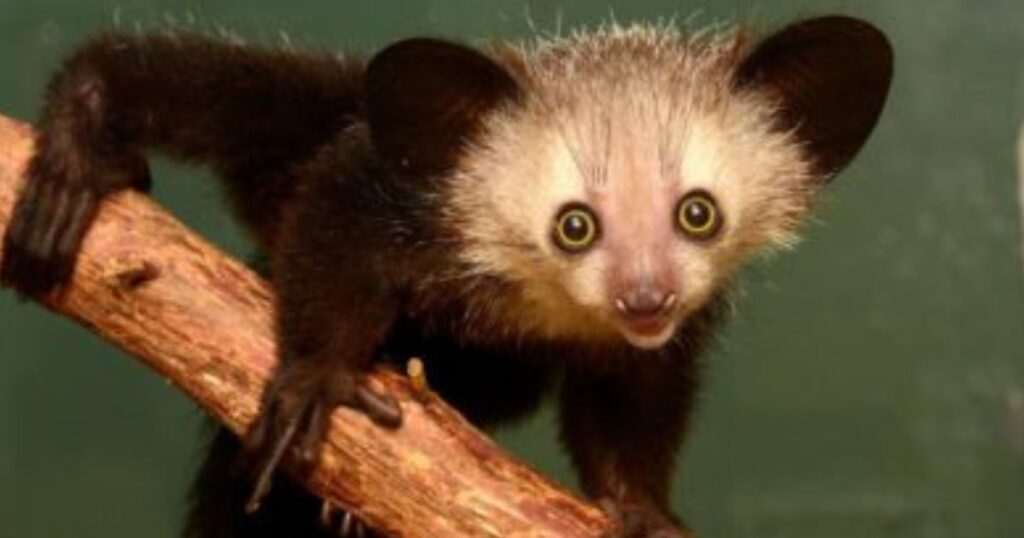
The aye-aye is a rare and fascinating creature found in Costa Rica’s lowland rainforests. This unique primate, which resembles a lemur, is known for its large eyes and distinctive long, thin middle finger used for foraging. Although the eye-eye is not brightly colored, its big eyes help it see in low-light conditions, making it well-adapted to its nocturnal lifestyle. Unfortunately, this unusual animal is often shrouded in superstition and is seldom spotted by visitors. However, eager wildlife enthusiasts might catch a glimpse of it in places like the remote habitats of the Osa Peninsula and certain areas of Corcovado National Park.
5. Central American Squirrel Monkey
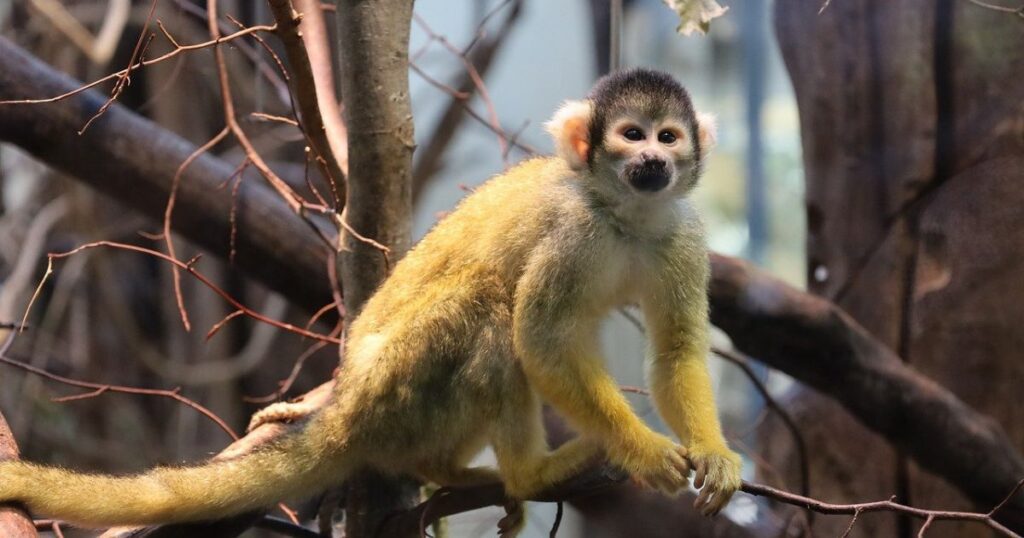
The Central American Squirrel Monkey is one of the most charming primates found in Costa Rica. With its small size, bright yellow fur, and playful personality, it’s hard not to be captivated by these lively creatures. Unlike many other monkeys, squirrel monkeys are known for their social behavior and often move in large, energetic groups through the treetops. They primarily feed on fruits, insects, and small vertebrates, showcasing their agile foraging skills. You can commonly spot them in Manuel Antonio National Park.
6. Costa Rican Pine Snake
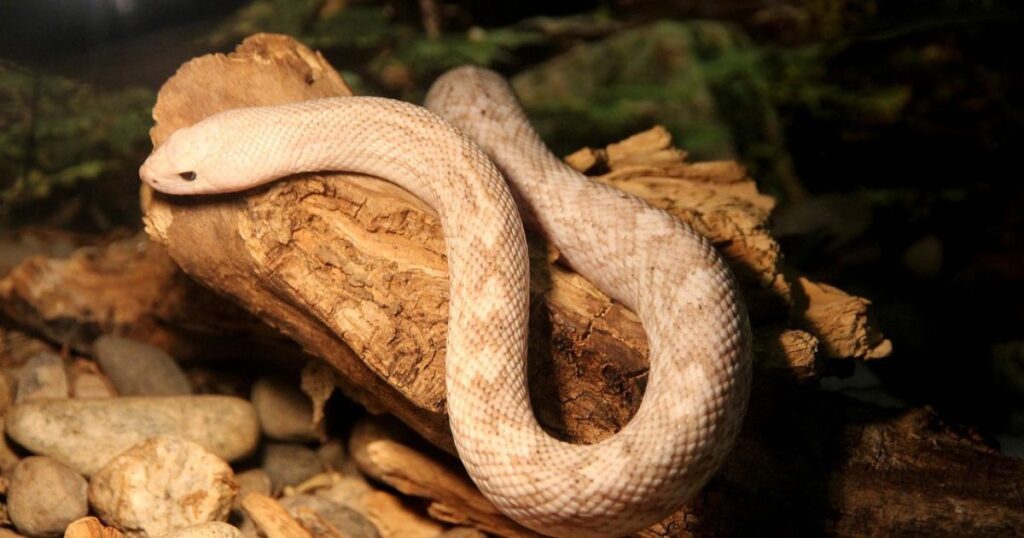
The Costa Rican Pine Snake is a fascinating but often overlooked inhabitant of the country’s diverse ecosystems. Unlike many of its brightly colored counterparts, this non-venomous snake sports a more muted palette, typically showcasing a brown body with subtle dark markings. While it may not be as notorious as some other snakes, it plays an important role in maintaining the balance of its habitat. The Costa Rican Pine Snake is primarily found in moist lowland areas and tropical forests, especially around the Osa Peninsula.
7. Four-eyed Fish (Anableps)
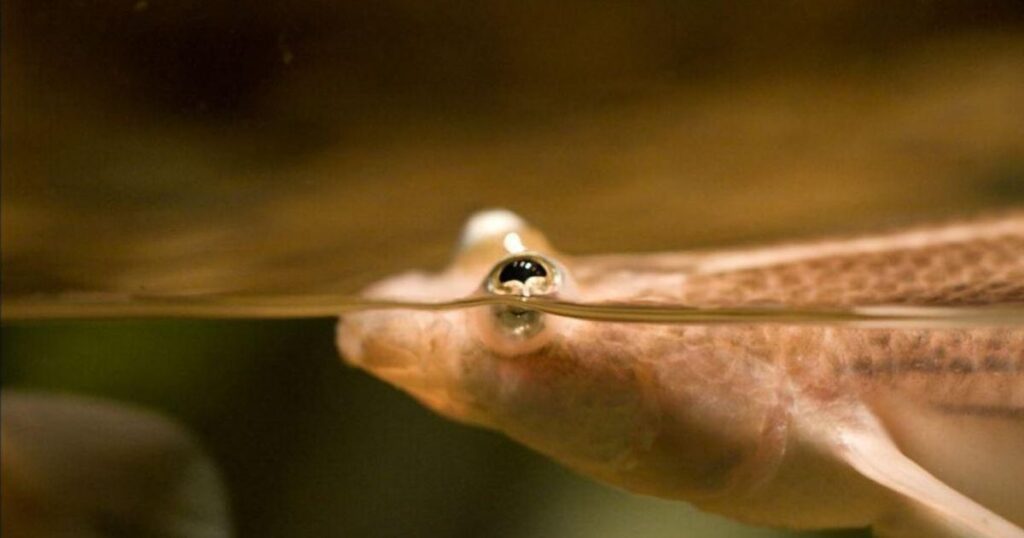
The Four-eyed Fish—known scientifically as Anableps—is a unique and fascinating creature found in the waters of Costa Rica. Unlike your typical fish, it possesses a remarkable adaptation: its eyes are divided, allowing it to see both above and below the water simultaneously. This gives it an advantage when spotting predators and prey. Although it may not have vibrant colors, its interesting features make it memorable. The Four-eyed Fish can often be spotted in the Tarcoles River, where it swims along the surface, gliding in and out of view.
8. White-lipped Peccary
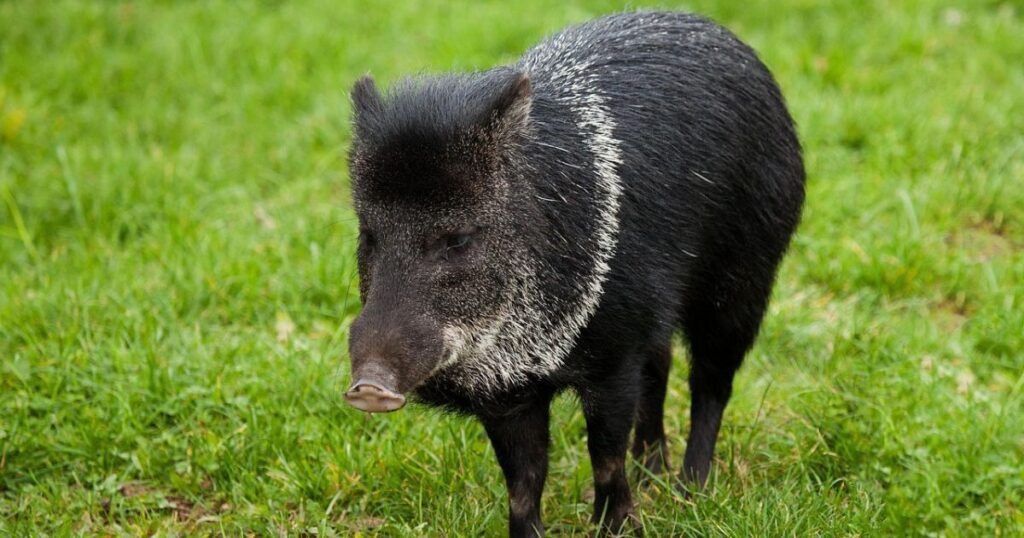
The White-lipped Peccary is a fascinating and lesser-known animal that roams the forests and grasslands of Costa Rica. Resembling a wild pig, it has a stout body covered in coarse, dark fur with a distinctive white stripe running along its snout and mouth. These animals are social creatures, typically found in large herds that can range from a dozen to over a hundred individuals. While they are generally friendly among their own kind, they can be quite protective of their group. If you want to catch a glimpse of these intriguing mammals, head to Corcovado National Park, where they often forage along riverbanks and in dense underbrush.
Tips for Responsible Wildlife Watching
The privilege of observing the amazing Costa Rica animals comes with the responsibility to do so in a way that is respectful and mindful of their habitats and well-being. Responsible wildlife watching is essential for preserving the delicate balance of Costa Rica’s ecosystems and ensuring future generations can also experience the country’s natural wonders. Below are key tips for engaging in responsible wildlife watching:
Observe from a Distance
Maintain a respectful distance from animals so you can avoid stressing them. Close encounters can disrupt their natural behavior and may lead to harmful interactions. Use binoculars or a zoom lens instead of approaching the animals directly.
Stay on Designated Trails
Stick to marked paths and trails when hiking. Venturing off the trails can damage the vegetation and disturb wildlife habitats. Staying on established routes helps minimize your impact on the environment.
Avoid Feeding Animals
Feeding wildlife is harmful as it can alter their natural feeding habits and may result in dependency on human food sources. This can also encourage animals to approach humans, which can result in dangerous situations for both parties.
Keep Noise to a Minimum
Loud noises can scare animals away and disrupt their natural behaviors. In addition to keeping conversations quiet, avoid using loud machinery or playing music in wildlife-rich areas.
Respect Breeding Seasons
Some species may be particularly vulnerable during breeding or nesting seasons. Avoid disturbing nesting areas or exhibiting behaviors that could interfere with their reproductive activities.
Limit Group Sizes
Smaller groups create less disturbance in natural settings. If possible, book tours that limit the number of participants to ensure a more intimate and less invasive experience for wildlife.
Educate Yourself and Others
Learning about the local wildlife, their behaviors, and their habitats can enhance your experience while instilling a deeper appreciation for their conservation. Share this knowledge with fellow travelers to promote safe and responsible practices.
Choose Responsible Tour Operators
Research and select tour providers that prioritize wildlife conservation and follow ethical guidelines. Look for certifications from recognized organizations that emphasize sustainability and environmental education.
Avoid Disturbing Natural Habitats
Do not collect items like shells, plants, or rocks, and avoid trampling on delicate ecosystems. Protecting natural habitats is crucial for the survival of diverse species.
Report Disturbances
If you encounter people behaving irresponsibly, such as attempting to handle wildlife or making excessive noise, report these actions to the appropriate authorities. Raising awareness can help protect the natural environment and promote good practices among other tourists.
By following the tips above, you can contribute to the conservation of Costa Rica’s natural beauty and ensure that wildlife can thrive without fear of human interference. Engaging in eco-friendly practices will not only enhance your enjoyment but also promote the health of wildlife populations in the future.
Frequently Asked Questions
Costa Rica is a biodiversity hotspot, home to an incredible species of animals, from colorful birds and playful monkeys to elusive big cats and unique reptiles. If you’re planning a visit to this beautiful Central American country, you may have many questions about the animals you can see and how to make the most of your wildlife experiences.
Here are some of the frequently asked questions and answers to help you:
When is the best time to visit for wildlife viewing?
The best time to visit Costa Rica for wildlife viewing is generally during the dry season, which spans from December to April. During this period, animals are more active, and the likelihood of spotting them increases due to reduced vegetation and clearer trails. However, some wildlife, like sea turtles, may have specific nesting seasons that fall outside of this timeframe, so it’s essential to consider these factors based on the type of wildlife you hope to see.
Is there a best time of day for wildlife watching?
Yes, the best time of day for wildlife watching in Costa Rica is generally early in the morning and late in the afternoon. During these times, many animals are more active, making them easier to spot as they search for food and engage in social behaviors. The cooler temperatures and softer lighting also enhance the experience for observers.
Midday can be less productive, as many animals seek shelter from the heat, but some species, like certain birds, may still be visible throughout the day.
Where are the best national parks for spotting wildlife?
Some of the best national parks for spotting wildlife in Costa Rica include Manuel Antonio National Park, known for its diverse ecosystems and abundant monkey populations, and Corcovado National Park, which boasts some of the richest biodiversity in the world, including big cats and tapirs. Tortuguero National Park is famous for its sea turtle nesting sites and a vast array of bird species found in its wetlands. Monteverde Cloud Forest Reserve offers unique birdwatching opportunities, including the resplendent quetzal.
What is the likelihood of seeing monkeys in the wild?
The likelihood of seeing monkeys in the wild in Costa Rica is quite high, especially in regions like Manuel Antonio National Park, Corcovado National Park, and the Osa Peninsula. The country is home to several species, including howler monkeys, capuchin monkeys, and spider monkeys, which are often spotted in their natural habitats. These primates are social animals and are frequently seen moving through the trees or foraging for food during the day. With a bit of patience and some time spent in the right areas, you have a great chance of encountering these lively and fascinating creatures.
Are there any endangered species I should be aware of?
Yes, Costa Rica is home to a number of endangered species that are important to be aware of during your visit. Notable examples include the jaguar, Baird’s tapir, and the green sea turtle, all of which face threats from habitat loss and poaching. Conservation efforts are made to protect these species, but continued awareness and support for their habitats are crucial.
How can I identify different bird species?
Identifying different bird species in Costa Rica can be achieved through a combination of observation and research. A good field guide or smartphone app specifically designed for Costa Rican birds can provide valuable information on various species, including images, descriptions, and calls. Paying close attention to key characteristics such as size, color patterns, beak shape, and behavior, as well as listening to their distinctive songs, will help in recognition.
What should I pack for wildlife watching?
When packing for wildlife watching in Costa Rica, it’s essential to include binoculars for better viewing of animals at a distance. A good quality camera with a zoom lens will help you capture stunning wildlife moments, while lightweight, breathable clothing in neutral colors can help you stay comfortable and effectively blend into the environment. Additionally, packing sturdy hiking shoes, insect repellent, sunscreen, and a reusable water bottle will improve your overall experience.
Are there restrictions on photographing wildlife?
Yes, there are some restrictions and guidelines for photographing wildlife in Costa Rica to ensure the safety and well-being of the animals. While it is generally permitted to take photos, using flash is discouraged, as it can disturb animals. Additionally, it’s important to maintain a respectful distance and avoid getting too close, as approaching wildlife can cause stress to the animals and lead to dangerous encounters.
Are there nocturnal tours for spotting wildlife?
Yes, there are nocturnal tours available in Costa Rica that allow visitors to spot wildlife that becomes active after dark. These guided night tours provide a unique opportunity to observe nocturnal species such as owls, raccoons, night monkeys, and various amphibians and insects. Experienced guides use their knowledge of animal behavior and local habitats to enhance the experience and improve the chances of sightings.
What is the best way to see wildlife responsibly?
The best way to see wildlife responsibly in Costa Rica is to follow ethical guidelines that prioritize the well-being of the animals and their habitats. Always maintain a respectful distance, avoid direct interactions, and never feed wildlife, as this can alter their natural behaviors and diets. Consider joining eco-friendly guided tours led by knowledgeable naturalists who prioritize conservation and can ensure your visit has minimal impact on the environment.
Final Thoughts
Exploring the diverse array of animals in Costa Rica is an adventure like no other. From the playful capuchins swinging through the trees to the vibrant quetzals flitting between branches, the country is a living tapestry of ecosystems teeming with wildlife. Whether you’re wandering through the lush rainforests of Corcovado or taking a tranquil boat ride in Tortuguero, you’ll find unique opportunities to connect with these extraordinary creatures that call Costa Rica home.
As you plan your wildlife journey, consider visiting popular national parks and reserves that showcase the best of Costa Rica’s biodiversity. The country’s varied habitats offer something for everyone, whether you’re an avid birder seeking out elusive species or a nature enthusiast hoping to spot monkeys and sloths. Remember that patience and respect for wildlife are key components of responsible viewing, ensuring that these magnificent animals remain safe and undisturbed in their natural environments.
To make the most of your wildlife adventure, consider the freedom and convenience of renting a car from Budget Costa Rica. Having your own vehicle allows you to explore at your own pace, making it easy to visit multiple parks and discover hidden gems along the way. Explore the diverse landscapes and wildlife of Costa Rica while enjoying the flexibility of a rental car. Book your adventure today with Budget Costa Rica.

